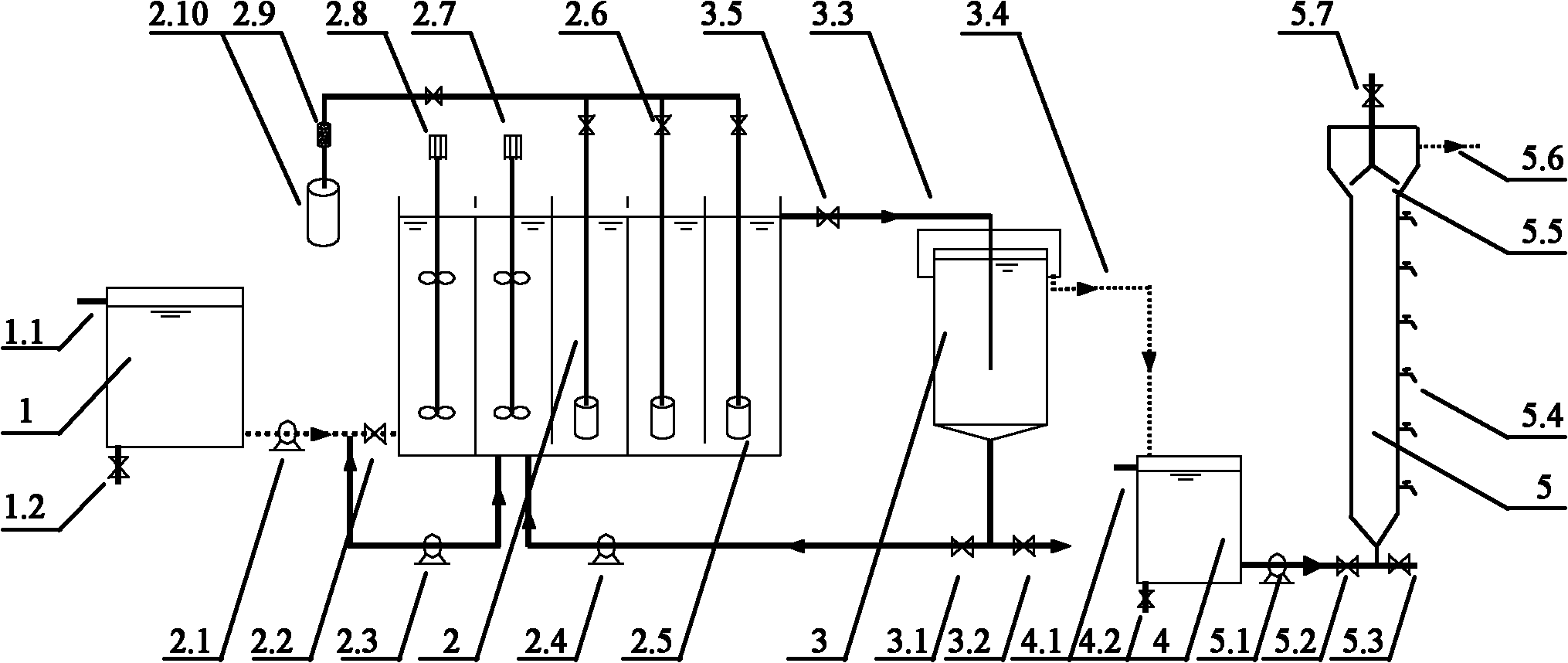Low-carbon urban sewage biological phosphorus removal and autotrophic biological nitrogen removal device and method
An autotrophic biological denitrification and biological phosphorus removal technology, applied in the field of biological sewage treatment, can solve the problems of not conforming to the low-carbon economy, circular economy, increase the production of carbon dioxide, increase the operating cost of water plants, etc. The effect of reducing floor space and reducing operating costs
- Summary
- Abstract
- Description
- Claims
- Application Information
AI Technical Summary
Problems solved by technology
Method used
Image
Examples
Embodiment Construction
[0025] Below in conjunction with accompanying drawing and embodiment the present invention will be further described: as figure 1 As shown, the low-carbon urban sewage biological phosphorus removal and autotrophic biological nitrogen removal device is equipped with raw water tank 1, biological phosphorus removal semi-short-range nitrification reactor 2, secondary sedimentation tank 3, intermediate water tank 4 and anaerobic ammonium oxidation UASB reactor 5 ; The original water tank 1 is an open box body, which is provided with an overflow pipe 1.1 and a vent pipe 1.2; the original water tank 1 is connected with the water inlet valve 2.2 through the water inlet pump 2.1;
[0026] The semi-short-path nitrification reactor 2 for biological phosphorus removal is an open pool body, which is divided into several compartments, and flow holes are arranged up and down to connect each compartment according to the direction of water flow, and the front end is an anaerobic compartment wit...
PUM
 Login to View More
Login to View More Abstract
Description
Claims
Application Information
 Login to View More
Login to View More - R&D
- Intellectual Property
- Life Sciences
- Materials
- Tech Scout
- Unparalleled Data Quality
- Higher Quality Content
- 60% Fewer Hallucinations
Browse by: Latest US Patents, China's latest patents, Technical Efficacy Thesaurus, Application Domain, Technology Topic, Popular Technical Reports.
© 2025 PatSnap. All rights reserved.Legal|Privacy policy|Modern Slavery Act Transparency Statement|Sitemap|About US| Contact US: help@patsnap.com


